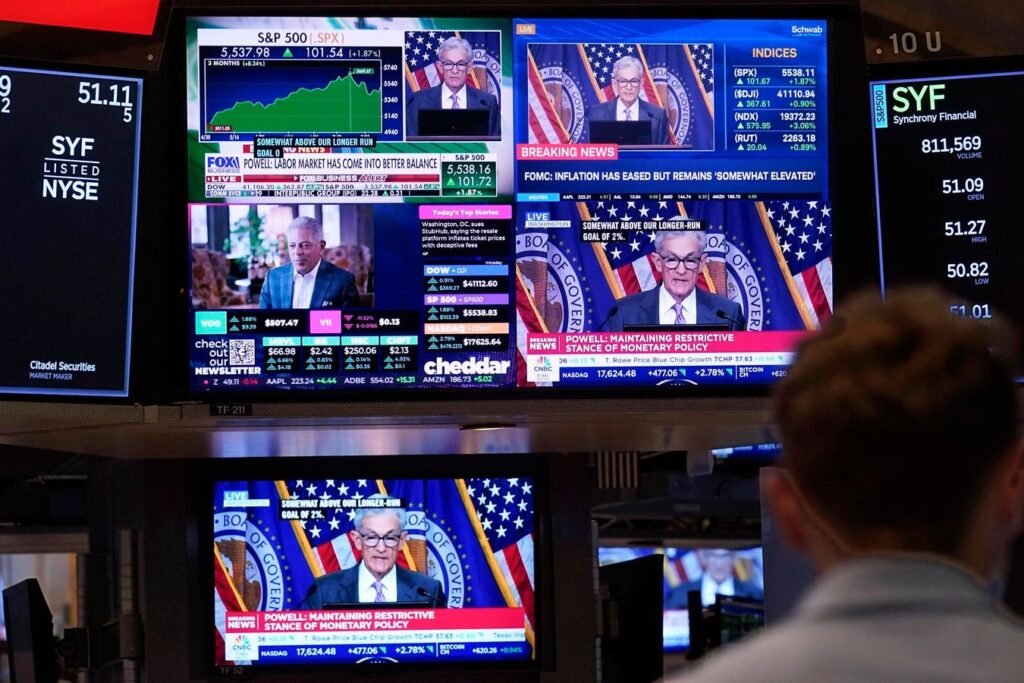On September 18, market expectations suggest that the Federal Open Market Committee (FOMC) will likely proceed with a modest interest rate cut of 0.25%, bringing the target range down to 5% to 5.25%. Analysis via the CME FedWatch Tool indicates this consensus among traders, signifying a shift in sentiment, as the possibility of a larger rate cut has significantly decreased, now estimated at around 10%. Recent economic indicators, including job figures and inflation data, have informed these predictions. Notably, forecasting site Kalshi points to a strong expectation, with a 99% chance of a rate reduction at the upcoming meeting, showcasing both market confidence and the FOMC’s signals toward a supportive monetary policy.
Inflation figures provide a crucial backdrop to the FOMC’s considerations. As reported, the headline Consumer Price Index (CPI) inflation stands at 2.5% year-over-year through August, while core inflation, which excludes volatile food and energy prices, is slightly elevated at 3.2%. Additionally, the Personal Consumption Expenditure (PCE) inflation, preferred by the FOMC, currently sits at 2.5%, with a slight increase to 2.6% when excluding food and energy. These inflation metrics, particularly a notable rise in shelter costs—up 5.2% annually—underscore an ongoing concern. Although inflation appears less daunting than in previous years, the FOMC remains cautious, as the inflation rate is still above the targeted level of 2%, prompting a reserved approach to interest rate cuts.
Despite easing inflationary pressures, the FOMC remains mindful of the potential for rising inflation to complicate its rate-cutting strategy. The central bank is keen on mitigating the very risk of inflation resurgence, especially as their recent rate hikes since 2021 were primarily aimed at combating persistent inflation concerns. A rate adjustment hinges significantly on achieving stable inflation close to the target. Consequently, if inflation were to align with the 2% target, the FOMC might adopt a more aggressive approach toward rate reductions. However, as current figures do not meet this target, a more measured strategy is anticipated.
In terms of labor market health, recent jobs data presents a somewhat mixed outlook. While the unemployment rate dipped to 4.2% in August, signifying an apparent resilience in the labor market, non-farm payrolls increased by 142,000. This data somewhat alleviates concerns surrounding significant job market deterioration, even as unemployment rates have been gradually rising over the year. Historical precedents highlight that even modest increases in unemployment levels may foreshadow potential recessions, further complicating the FOMC’s policy decisions. Thus, while a gradual increase in unemployment may not signal an immediate crisis, these trends necessitate careful monitoring to avoid rapid economic decline.
Looking ahead, market analysts are weighing the likelihood of more aggressive rate cuts, potentially around 0.5%, during the FOMC’s subsequent meetings in November or December. The anticipation for larger adjustments stems from forecasts of rising unemployment, as three additional Employment Situation Reports are forthcoming before the end of the year—scheduled for October 4, November 1, and December 6. Should these reports indicate further labor market weakness coinciding with a movement closer to the FOMC’s long-term inflation target, it may alter the Committee’s stance, leading to a reevaluation of their monetary policy approaches.
In summary, the FOMC’s upcoming meeting is poised to reflect a delicate balancing act between reducing interest rates to stimulate economic growth while also staying attuned to inflationary pressures and labor market signals. Current indicators suggest that inflation remains a concern, albeit less pressing compared to previous years, and the employment data provides a cautiously optimistic picture. The Committee is positioning itself to make measured, data-driven decisions in the coming months, with particular attention devoted to how evolving labor conditions and inflation rates may impact their broader economic outlook and policy framework. The trajectory of interest rates in the latter part of 2024 will depend on the unfolding economic landscape, with market participants closely monitoring upcoming reports for definitive guidance on the FOMC’s next steps.

